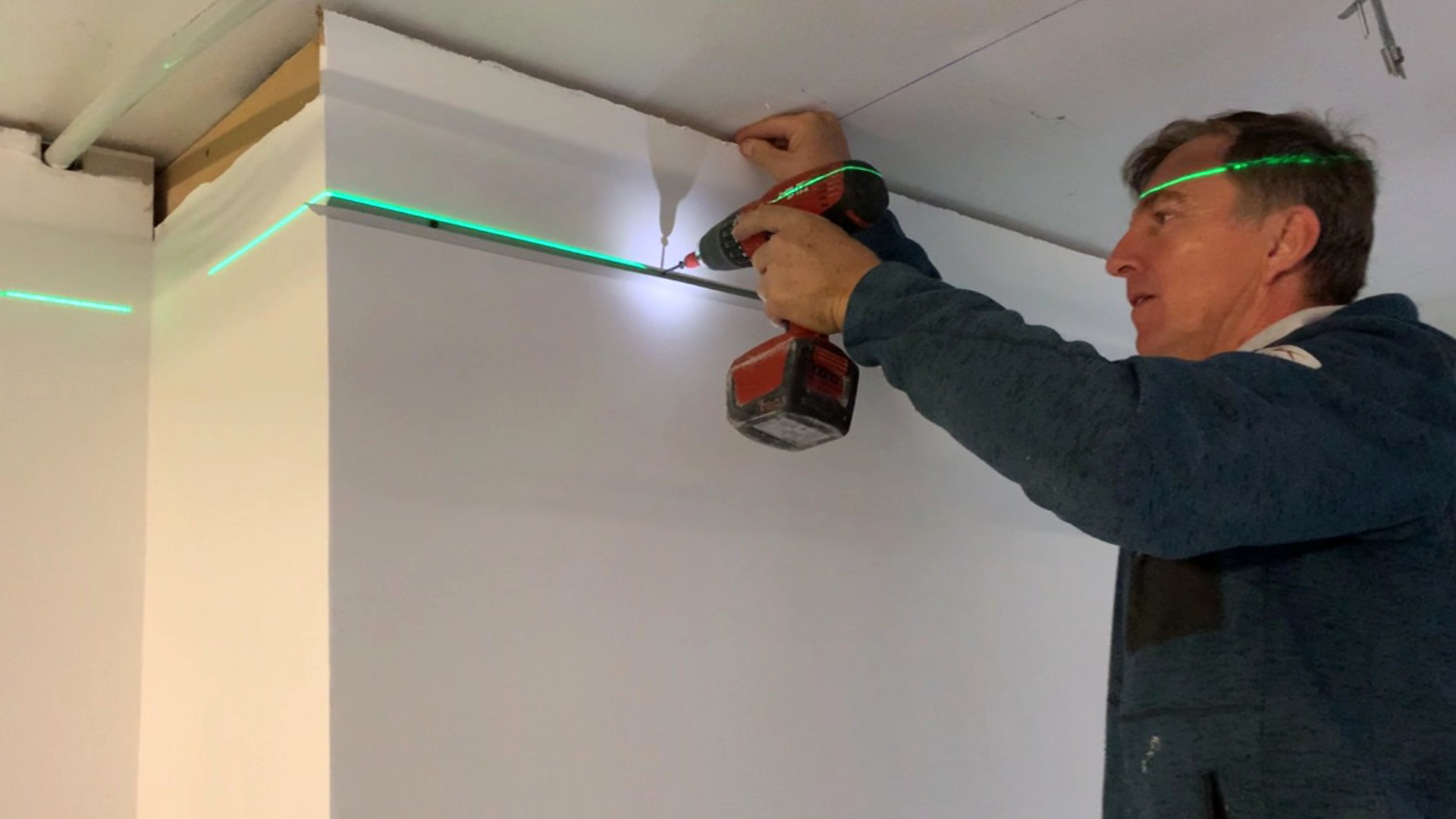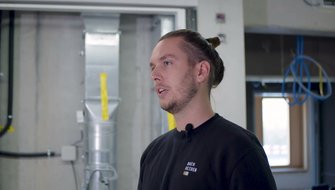03/23/2021
The company S.E.M. Tamegger, located in Vorarlberg, Austria, has been around for 27 years. It is a real family business with Mr Tamegger, his wife and their two sons, aged 27 and 21, all working for the company. They work together and live together, connected by the business. It is evident from their work that they are all enthusiastic about the craft. Both the young men have completed drywaller apprenticeships, and the younger of the two is currently in the process of obtaining a master drywaller qualification. They work in the ancillary building trade, more precisely in dry walling and construction. In addition to general drywall and plastering work, the company specialises in sound insulation and acoustics, and in fire protection.
In Dornbirn, in a former care home right next to the hospital, a new social work training centre is being created on behalf of the Dornbirn Technical College. It is a very interesting project, especially in these times of the coronavirus pandemic where the lack of specialists in the care sector is a global issue.
S.E.M. Tamegger’s specific part in this important project is to dismantle the existing interior and construct the new training and seminar rooms. The ceilings need to be reinstalled to meet the acoustic and sound specifications, and drywalls need to be installed as per the plans.
This is the exact procedure for installing the ceilings. Firstly the suspension brackets need to be mounted. The new ceiling will be suspended from these brackets using eyelet wire. The quick-release spring helps to quickly adjust the angle to the correct height. The walls are measured and the support rails are cut to the right size. Then the support rails are fixed to the wall at the correct height. Next, the support rails are put into the suspension brackets and joined together using a plug-in system. Finally, the acoustic panels are inserted.

It is very important that everything is completely level horizontally and at the correct height. Precision alignment is essential when it comes to suspended ceilings.
The drywall company has only been using their Leica Lino L6G for a few weeks and they are already enthusing about the brightness of the green laser lines.
The clarity and precision of the laser lines is very impressive, even in large spaces,
says Manfred Tamegger, enthusiastically.
Leica Geosystems achieves this optimum visibility thanks to the thin, sharp, clear lines emitted by the high performance green diodes in the 3 x 360° multi-line laser Lino L6G. Green laser lines are four times more visible to the human eye than red ones. This makes green lasers more suitable for longer distances and increases visibility in bright spaces.

For years, the Tameggers worked with a rotating laser and a spirit level. They often found the rotating red dot difficult to see. Setting the rotating laser up on its tripod was quite time-consuming and it was often then in the way on the site. The clarity of the laser lines and the Lino’s ease of use really has them sold.
The Lino L6G is a huge step forward. The main benefit for us is how quickly we can adjust suspended ceilings. It is an absolute dream,
says Mr Tamegger.
The lines can be selected very easily using just one button. There is a suitable setting for every type of job, whether you want just vertical lines, just horizontal, or all of them, whether you are staking out or aligning horizontally.
The wall-mount is definitely a must-have. You can easily set the required height with the wallmount’s adjusting screw and then the Lino is correctly positioned in seconds,
explains Mr Tamegger.

The wall-mounting clip and the magnetic adapter make it really easy to attach the Lino L6G to Uprofiles, C-profiles and other stud frames. The fine adjustment screw can be used to adjust the height of the laser with millimetre level accuracy.
In addition, it greatly simplifies the installation of plasterboard walls. Thanks to the integrated, eccentric base, the vertical laser lines can be rotated around the defined plumb point, enabling a 90° angle to be marked out. The position of the required profile can then be marked and fitted. Metal frames and doors can be aligned in the same way.
The Lino is in constant use at S.E.M. Tamegger and is as essential a tool as the ladder, the mobile scaffolding and the screws. 99 % of the time the Lino is operated using the Li-Ion batteries but if these run down the mains connection included with the unit ensures uninterrupted operation. The laser can operate for up to 11 hours using the Li-Ion batteries. Alternatively, alkaline batteries can be used, or it can be plugged directly into the main power supply.
The clarity of the lines and the fact that we can now install things much faster have exceeded our expectations,
concludes the drywall specialist. He can see applications for the Lino in other trades too, such as locksmithing and for door and window installations.
The Leica Linos are dust and spray water protected. This makes them tough instruments – suitable even for construction site conditions.









